
According to the latest referral-to-treatment (RTT) waiting times figures for England, elective reform remained stalled for a third consecutive month. The waiting list needs to shrink by roughly one million patient pathways year-on-year, to restore the statutory 18 week standard by March 2029 as the government has pledged. In December the year-on-year reduction was stuck at just 144,000, of which about 50,000 was the result of counting changes earlier in the year.
Analysis produced for Health Service Journal by Dr Rob Findlay, Director of Strategic Solutions at Insource Ltd and founder of Gooroo Ltd
Whilst a shrinking national waiting list is important to policymakers, waiting times are what matter to patients. They lengthened nationally in December, by half a week to 42.7 weeks RTT.
In the following discussion, all figures come from NHS England. You can look up your trust and its prospects for achieving the waiting time targets here.
The numbers
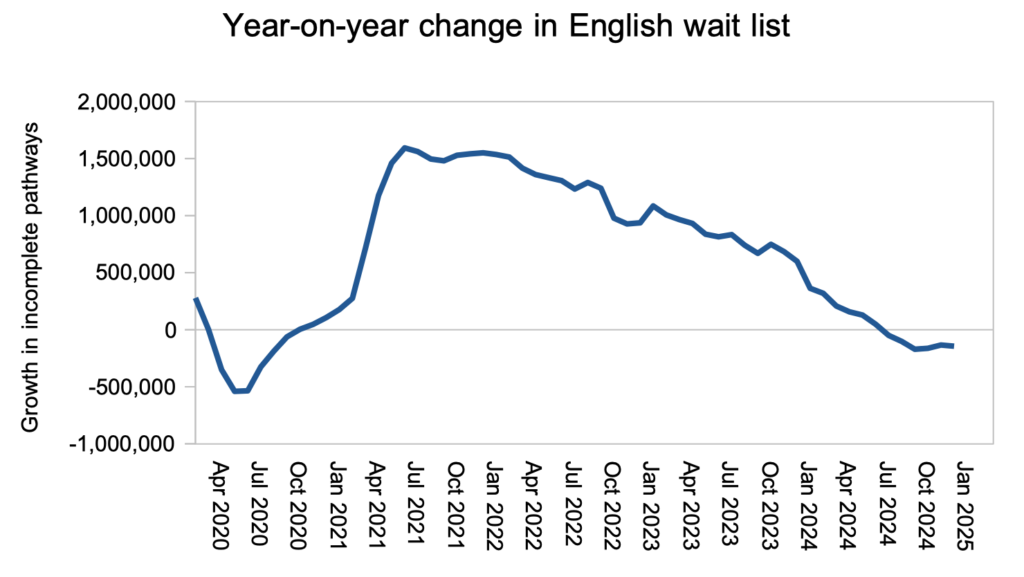
The chart below shows that the RTT waiting list needs to shrink by about four million patient pathways over the next four years to restore 18 week waits by March 2029. That’s around one million patient pathways per year. The chart above shows that recovery has stalled well short of that rate.
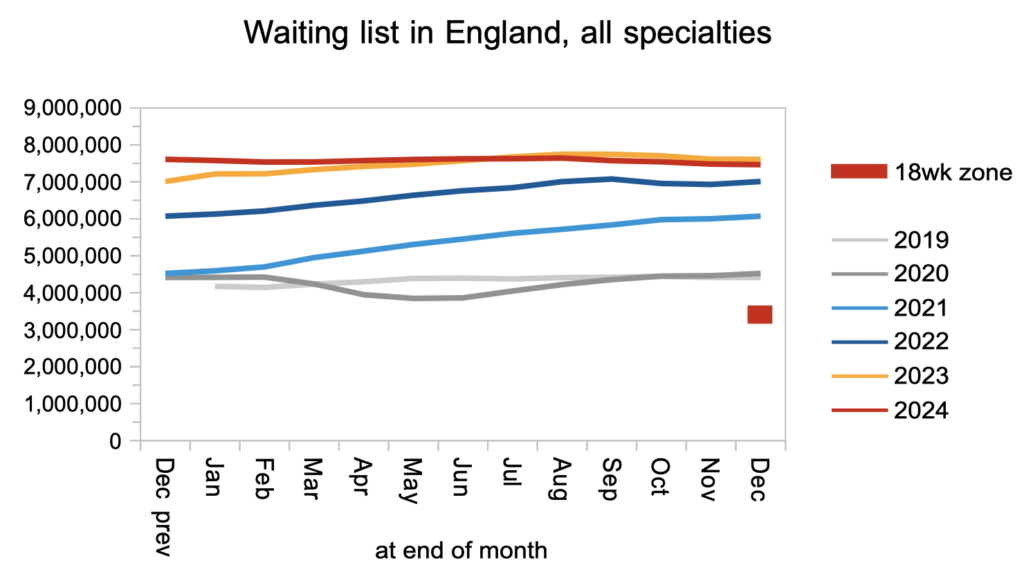
The next chart shows that waiting times increased slightly in December, by 0.5 weeks to 42.7 weeks RTT. A large majority of waiting list patients (6.3 million pathways out of a total list of 7.5 million) are waiting for diagnosis and decision, of which an estimated 27,223 will unexpectedly turn out to have cancer; the typical waiting time for diagnosis and decision also increased slightly to 41.0 weeks.
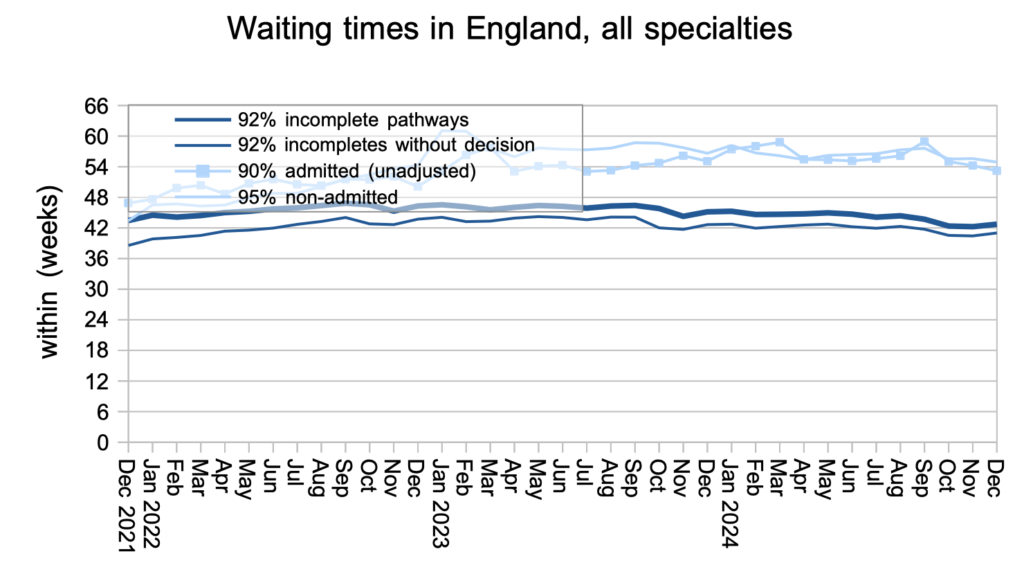
Waiting times are a function of both the size and shape of the waiting list, and the shape is summarised by the index below. It remains poor, but can be expected to improve as waiting times approach 18 weeks RTT in the coming years.
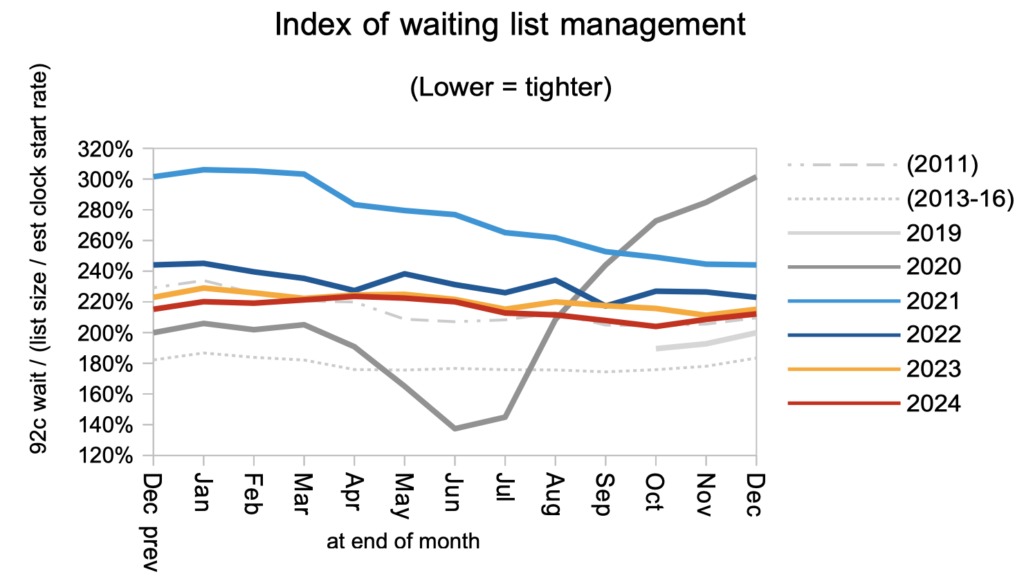
At trust-specialty level, there has been significant progress in reducing the longest waiting times in local services around the country. But there is a very long way to go: the red line needs to fall roughly to the bottom grey line by 2029.
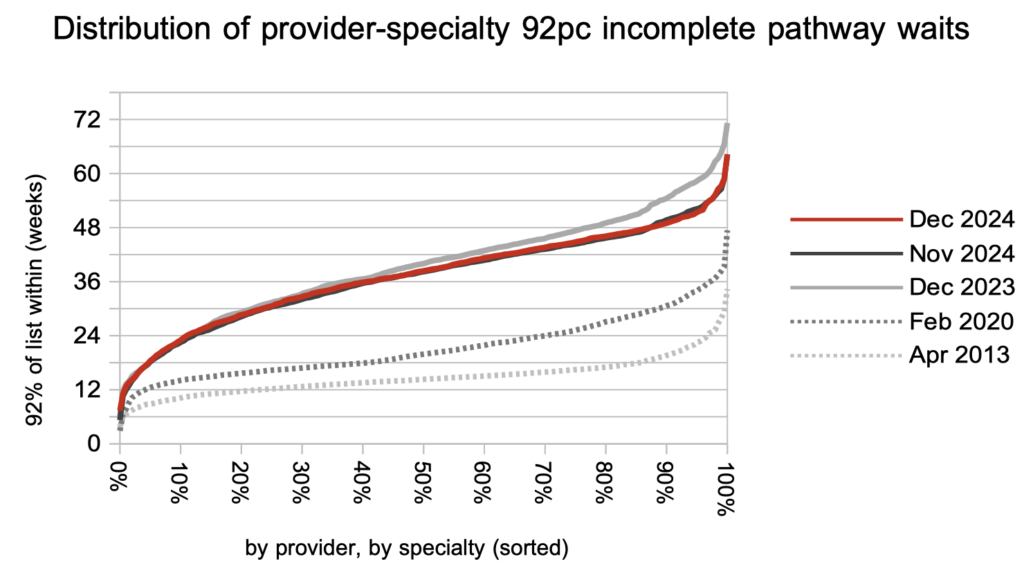
The rise in waiting times was seen across all the large surgical specialties.
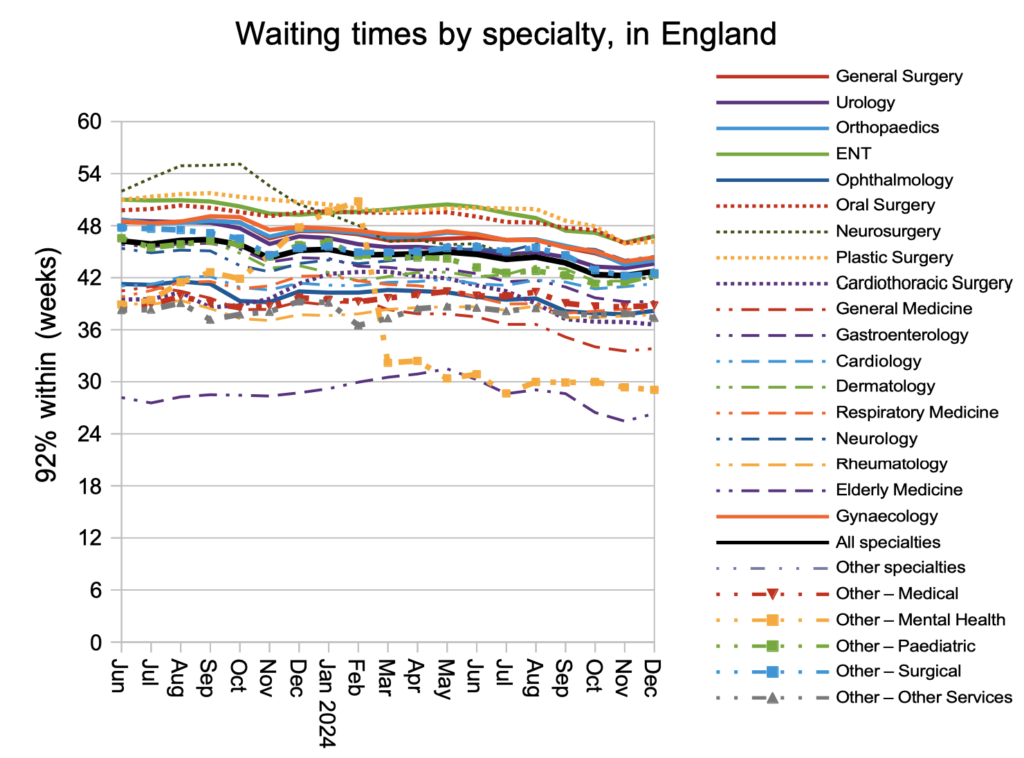
Finally, let’s take a look at trends in demand and activity. Demand, measured by the rate that patients start new waiting time ‘clocks’, remained similar to last year and only slightly above the pre-pandemic rate.
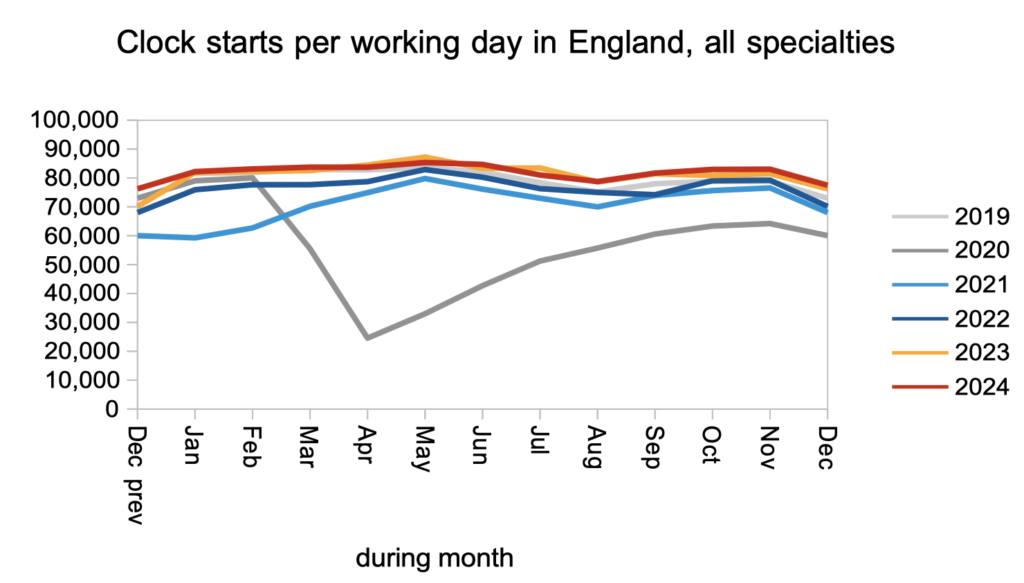
Patients were discharged from outpatients and diagnostics at a similar rate to last year, and significantly faster than pre-pandemic. There are several reasons why outpatients and diagnostics are good places for hospitals to focus their efforts. First, undiagnosed patients are a source of clinical risk, including the estimated 27,223 patients nationally who will eventually turn out to have previously-unsuspected cancer. Second, this is where the sheer numbers are, and sheer numbers are difficult and expensive to manage. Third, this is relatively low cost-per-case activity that makes a visible difference to large numbers of patients, so it is good value in these difficult times.
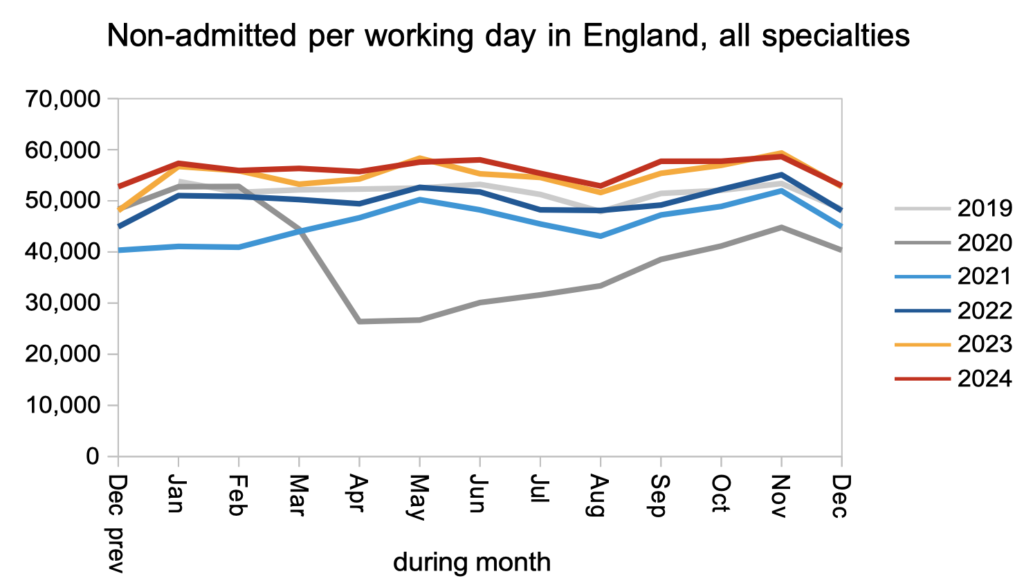
Patients were admitted for treatment as inpatients and daycases at a faster rate than last year, but the gap narrowed as winter pressures started to bite.
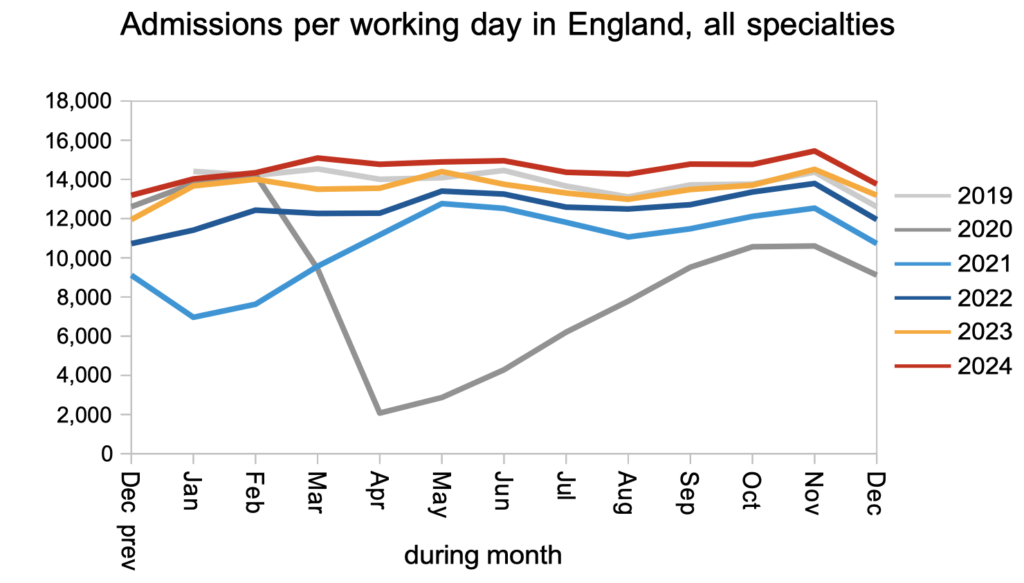
Referral-to-treatment data up to the end of January 2025 is due out at 9:30am on Thursday 13th March.
